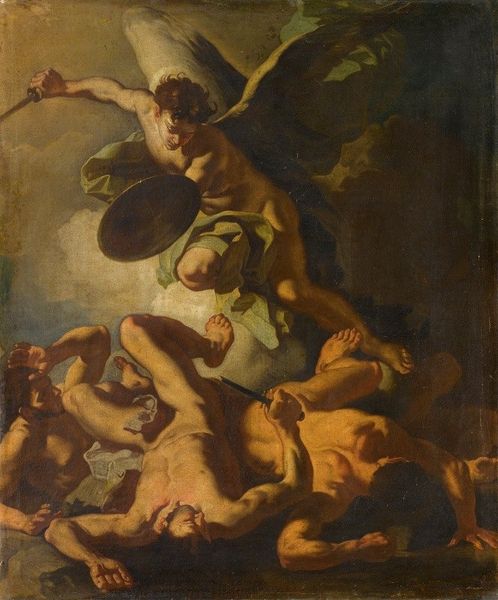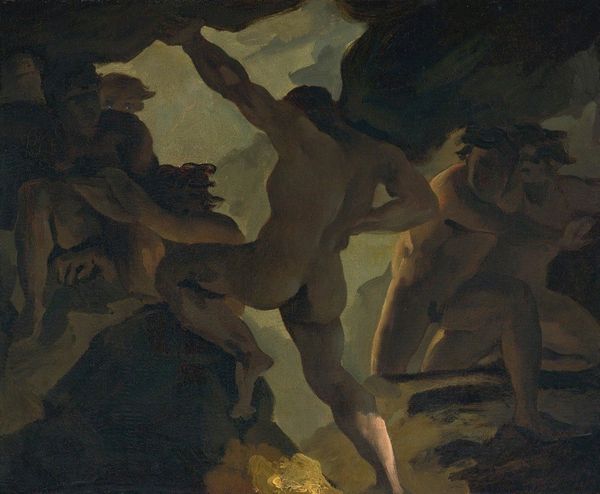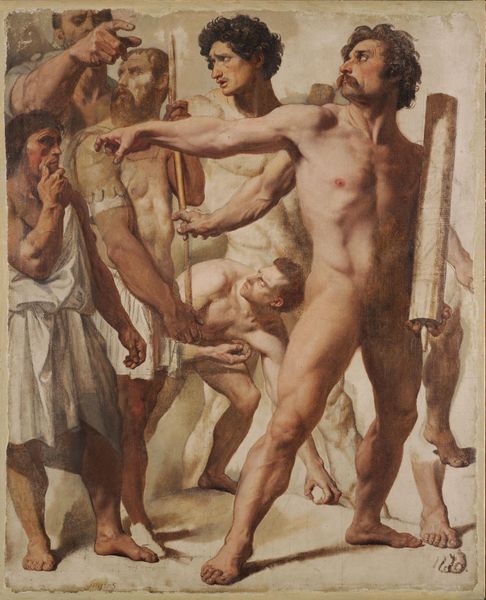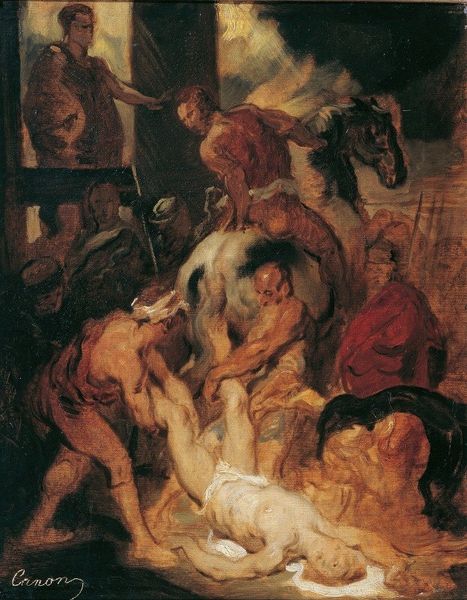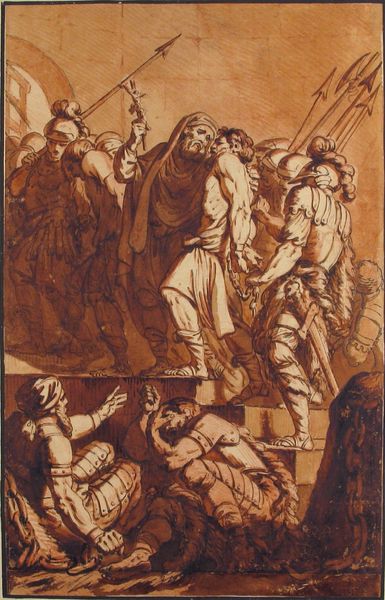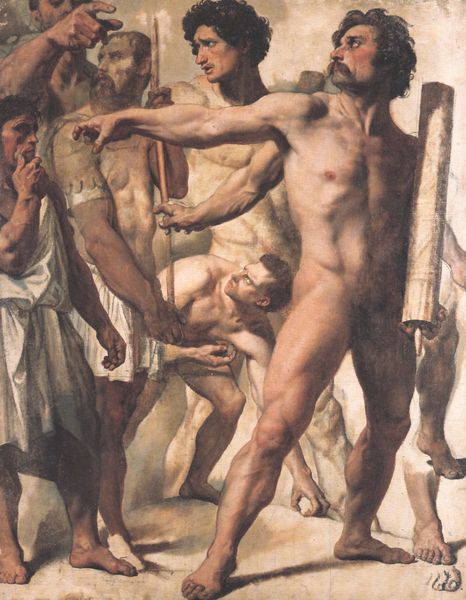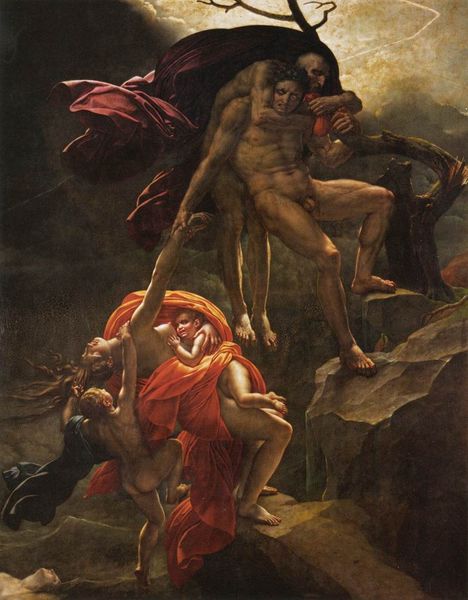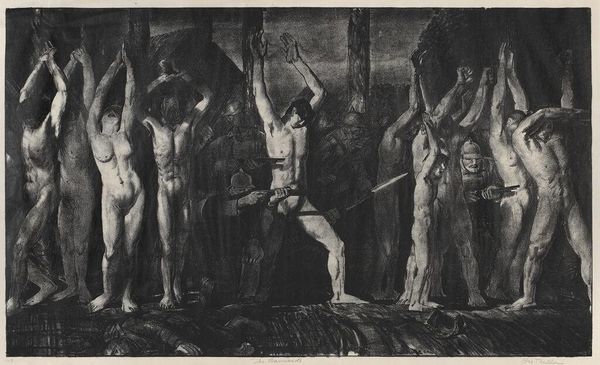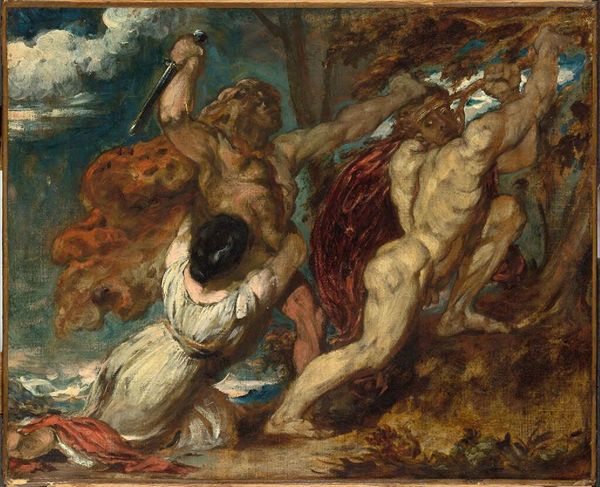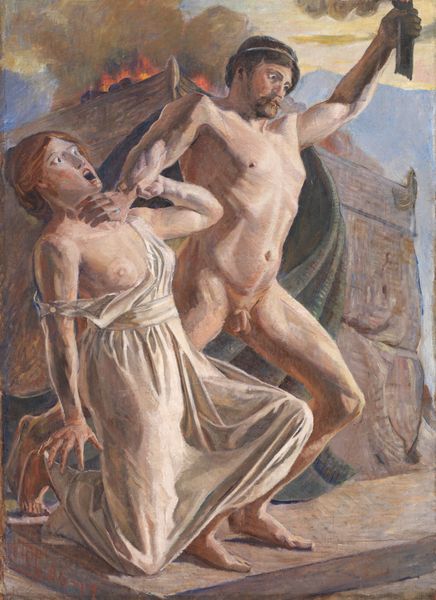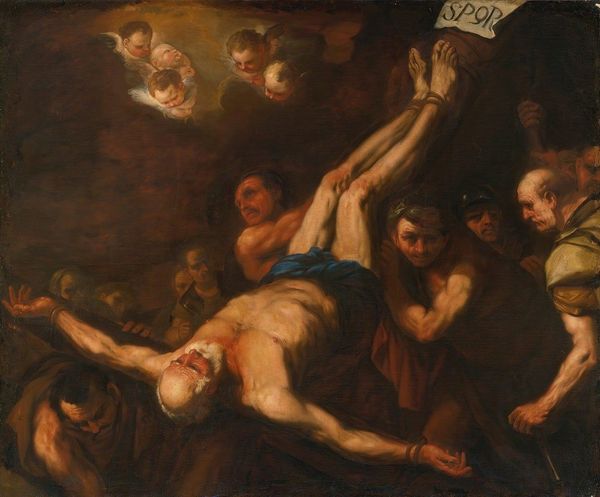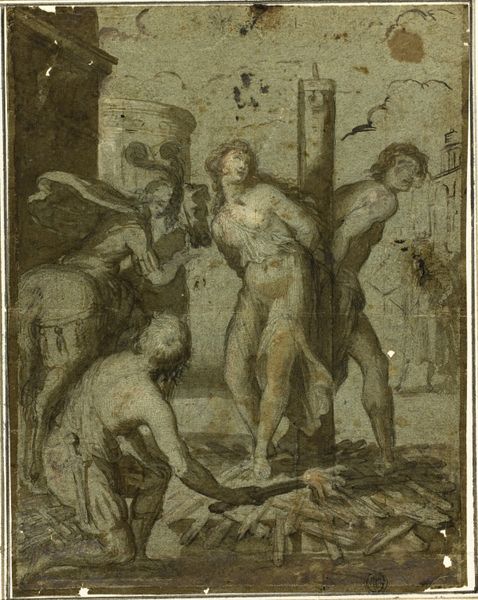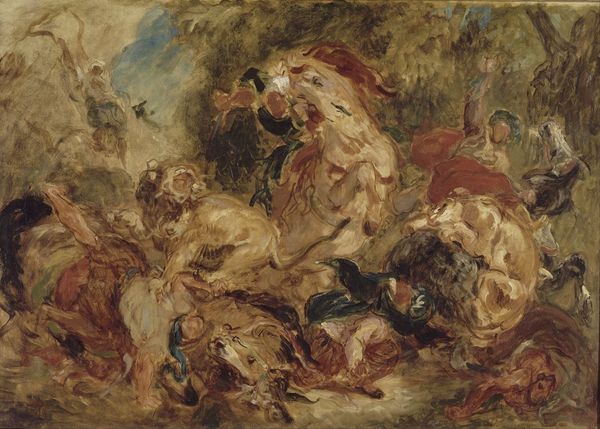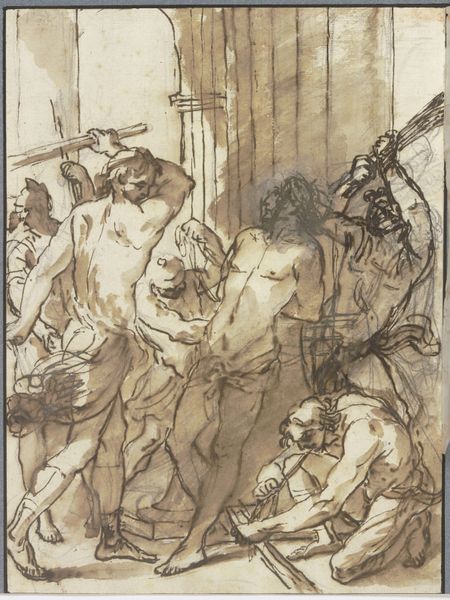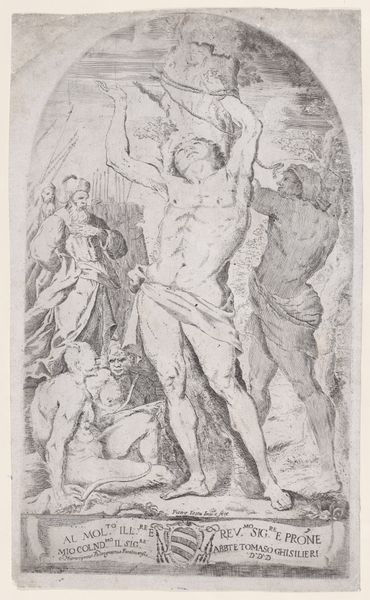
oil-paint
#
oil-paint
#
figuration
#
oil painting
#
history-painting
#
italian-renaissance
#
nude
Copyright: Public Domain: Artvee
Curator: This striking oil painting is Jacopo Tintoretto's "Martyrdom of Saint Peter," created around the 16th century. The composition seems unsettling, even chaotic, at first glance. Editor: Unsettling is the right word. I am immediately struck by the disturbing tension: the upturned figure of the saint against the efforts of the executioners straining to secure him upside down to the cross. There's something viscerally jarring about the implied movement. Curator: The inversion is crucial. Saint Peter, traditionally seen as the first Pope, requested to be crucified upside down, not feeling worthy to die in the same manner as Christ. Thus, his positioning here isn't simply for dramatic effect, it is rich in symbolism and conveys humility even in his final moments. Editor: Absolutely, but it also represents a radical disruption of the conventional, perhaps a toppling of the established order, seen from a psychological lens. Tintoretto underscores that upheaval with his bold brushwork, particularly in the way he renders the musculature of the executioners. They seem almost frantic in their efforts, wouldn't you agree? Curator: Yes, the dynamism is palpable, achieved in part through the stark contrasts of light and shadow. Observe how the highlights seem to gleam from the figures, emphasizing their physical exertion, but also drawing the eye to Peter's serene, almost beatific, face. It's a brilliant use of tenebrism to heighten the emotional intensity. Editor: Indeed. Consider the ropes and chains binding St. Peter, those chains of office themselves, so to speak, also suggesting bonds of spiritual leadership and sacrifice that, for centuries to come, his successors will symbolically, if not literally, shoulder. Even the looming figure above with the placid expression participates in that loaded symbolic landscape. Curator: She could represent the detached and impersonal presence of authority… it serves as a reminder of the narrative's socio-political dimensions within its religious significance. Now that you mention it, those muted yet fiery, earthy tones that Tintoretto deployed also play a significant role in the composition. It feels grounded in physicality yet reaching toward transcendence. Editor: That visual and allegorical tension creates a viewing experience that lingers long after one has moved on. Tintoretto delivers an image with great physical power while quietly, reverently framing a supreme act of belief.
Comments
No comments
Be the first to comment and join the conversation on the ultimate creative platform.
